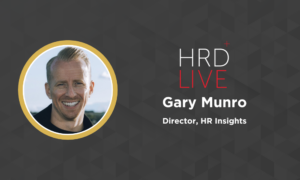Josh Bersin: how to improve employee experience
- 5 Min Read
HR thought leader Josh Bersin outlines the crucial employee experience factors for leaders to bring about success in the time ahead
- Author: Fin Murphy
- Date published: Jul 29, 2021
- Categories

HR thought leader Josh Bersin published new research on employee experience, giving leaders across the world perspective on why employee experience has grown in importance, the key considerations for creating an effective strategy, and the ultimate influence on organisational goals.
Created in collaboration with over 980 companies, Bersin highlights the employee experience practices that work, how leadership, strategy and innovation are crucially interlinked, how effective employee experience is being pursued across sectors.
Read on to learn some of Bersin’s key lessons from his fresh research.
The urgency of employee experience
Over the past six to nine months, several factors have collectively brought employee experience to the top of the HR agenda. One is the pandemic. Many companies have been trying to understand how they can support employees at home, then create a hybrid working experience. This change has led to conversations about the technology we need. What is the new role of leaders when people are working from home versus the office? How do we support people when they feel overworked and under stress from working extra hours?
The lack of innovation in the technology market has taken away from the employee experience. Until last year, HR software resembled transaction systems – unfit for purpose. Companies realised their employees were not using them effectively, which was stifling productivity. They have been trying to design a consumer-like experience for employees, to make employees more productive or enable self-service.
Third, the job market is having an impact on how leaders can provide an effective employee experience. As the U.S. economy improves, employers are having a hard time hiring people, so they want to create a better work experience, focusing on productivity, retention strategies, and engagement, so people don’t leave.
Defining the metrics that matter
Analytics scores highly as a top organisational practice, to get better data on the metrics that matter. The first is employee sentiment: where in the company are people unhappy, and why? If you do not have that information, it is hard to design a solution.
The second is business data on where the company is underperforming. In every company, teams perform differently; some have high turnover rates, low productivity, or low customer retention, for instance. Usually, if you get into the detail those areas, there’s a range of people issues, but it could be workforce or workplace design, Part of it is looking at that data, and then prioritising your time and energy in the areas of need, and then using the expertise you develop solving that problem to move to the next problem.
One solution was to build a career development and employee training programme that employees could access at any point in their time at the company. Now, Bank of America has a 91% retention rate and skyrocketing employee engagement, and diversity metrics have improved, but the company had to start with that problem area.
Employee experience innovations in hybrid work
Leaders are devising a range of creative proposals to benefit the employee experience in hybrid working conditions. The simplest of all is videoconferencing, and real-time communication through instant messaging software. You can be connected to the workplace wherever you are.
The second is the huge growth in employee experience tools which develop a portal and journey for employees to do their jobs. If employees need a policy or process for requesting leave or a process for filing expenses, it’s possible to use one of these new experience tools to develop that.
Technology developers have created a new set of coaching and wellbeing tools that are conversational in nature. Similar to business chatbots, these tools allow employees to engage in a virtual conversation with another person or a “bot” about issues that matter. We can have more meaningful and productive experiences at work, but with all those innovations, the most important thing is management and leadership.
The path ahead for employee experience
This is the beginning of a huge movement for companies. In the case of Jeff Bezos; he became the chairman of Amazon and declared he was going to try to make Amazon the best employer in the world. Virtually every CEO is going through this, they are looking at a tight labour market in the U.S., for example.
Leaders are actively seeing how they can make the employee experience better. The focus is both on finding solutions to make employees more productive and also much happier.
This is a CEO-level issue and not a passing fad. HR has suddenly been asked to deal with issues like workplace design, wellbeing, resilience and mental health issues that have been absent from the agenda up until the last couple of years. This is a massively growing market. It is an opportunity for HR to become design-oriented, consultative and functional, across finance, legal, health and safety.
This feature was adapted from an interview conducted on Friday 16th July 2021.








